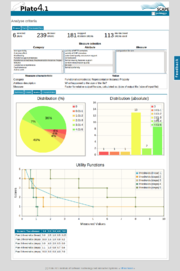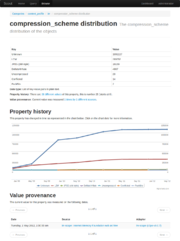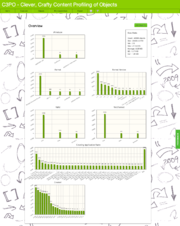Plato Planning Suite
Digital preservation must ensure continued, authentic long-term access to digital objects in a usable form. This requires preservation actions to be carried out when the original environment of digital objects is unavailable. A variety of preservation actions exist, but each shows specific peculiarities, and a variety of factors influence the decision.
Preservation planning ensures authentic future access for a specific set of objects and designated communities by defining the actions needed to preserve it.
[Plato website]
Plato
The planning tool Plato is a decision support tool that implements a solid preservation planning process and integrates services for content characterisation, preservation action and automatic object comparison in a service-oriented architecture to provide maximum support for preservation planning endeavours.
Knowledge Browser
In planning, you have to evaluate potential preservation actions against your requirements. That includes defining a number of specific decision criteria that are driving the evaluation. We analysed hundreds of decision criteria from more than a dozen case studies, categorised them, mapped them to established quality models and analysed how to measure the different kinds of criteria so that evaluation and decision making is based on real measures instead of vague judgements or industry averages.
The Knowledge Browser quantifies the impact of decision criteria and can show you what effect different measures have in the real world.
Scout
Scout is a digital preservation watch system that allows you to be notified whenever some significant event in the world can bring you harm or profit.
[Scout website]
How does it work?
It gathers information from all around the world and curates it using link data technology. Then you can define questions that cross-link information. The system frequently monitors the your questions and notifies you when something important happens.
C3PO
C3PO is a software tool, which uses meta data extracted from files of a digital collection as input to generate a profile of the content set.
[C3PO website]
The tool follows a three part profiling process and provides facilities for data export and further analysis of the content, such as helpful visualisations of the meta data characteristics, partitioning of the collection into homogeneous sets based on any known characteristic. For each chosen partition of the content, a special machine-readable profile can be generated that contains aggregations and distributions for many of the properties. The profile optionally contains the set of chosen sample objects that are representative.
Photohawk
Photohawk is a pure Java implementation of SSIM and other image comparison algorithms. Additionally it packages the implementation as a Taverna plugin for use in a Taverna workflow.
[Photohawk website]
Photohawk implements the following algorithms:
- Absolute error
- Equals
- Mean absolute error
- Peak absolute error
- Structured similarity metric





